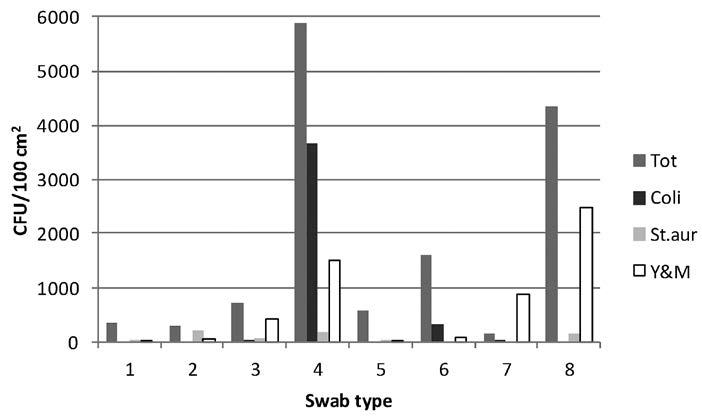Monitoring of microbial indicator groups in caves through the use of RIDA®COUNT kits
DOI:
https://doi.org/10.3986/ac.v41i2-3.565Abstract
RIDA®COUNT kitsMeasurements of microbiological parameters are not currently widely used for protection, monitoring and preservation of caves although they indicate very well the recent human impact. Here we present a commercially available microbiological kit for cave ecologists, the RIDA®COUNT test kit (R-Biopharm AG, Germany), as a supplementary tool for research and show examples. Simultaneously, lists of microbial indicator groups and cave microhabitats, where this methodology may be applied, are presented. Indicators include certain clinically important human-associated microbes such as Escherichia coli, Salmonella spp. and Staphylococcus aureus that are easy to quantify with basic cultivation methodology. Relatively higher bacterial counts compared to yeast and moulds on RIDA®COUNT test plates indicate recent and pronounced human impact. Swab samples allow detection of gradients of surface microbial colonization and determination of the microbial load on footprints and fingerprints in caves. In our tests, RIDA®COUNT plates for enumeration of yeast and moulds revealed a similar microbial load between unwashed caving boots and human fingerprints on a metal fence. Similarly, total bacterial counts were comparable between these two surfaces, 5,890 CFU/100 cm2 for unwashed boots and 4,340 CFU/100 cm2 for fingerprints on metal fence. Bacterial counts on walking surfaces in show caves can exceed 10,000 CFU/100 cm2 (Postojna Cave). These examples show that quantification of microbial indicator groups revealed increased microbial load and possible biohazard in the underground. This procedure may be widely adopted as a part of a regular monitoring programme in caves.Downloads
Download data is not yet available.

Downloads
Published
2012-12-15
How to Cite
Mulec, J., Krištůfek, V., & Chroňáková, A. (2012). Monitoring of microbial indicator groups in caves through the use of RIDA®COUNT kits. Acta Carsologica, 41(2-3). https://doi.org/10.3986/ac.v41i2-3.565
Issue
Section
Original papers
License
Authors guarantee that the work is their own original creation and does not infringe any statutory or common-law copyright or any proprietary right of any third party. In case of claims by third parties, authors commit their self to defend the interests of the publisher, and shall cover any potential costs.
More in: Submission chapter




